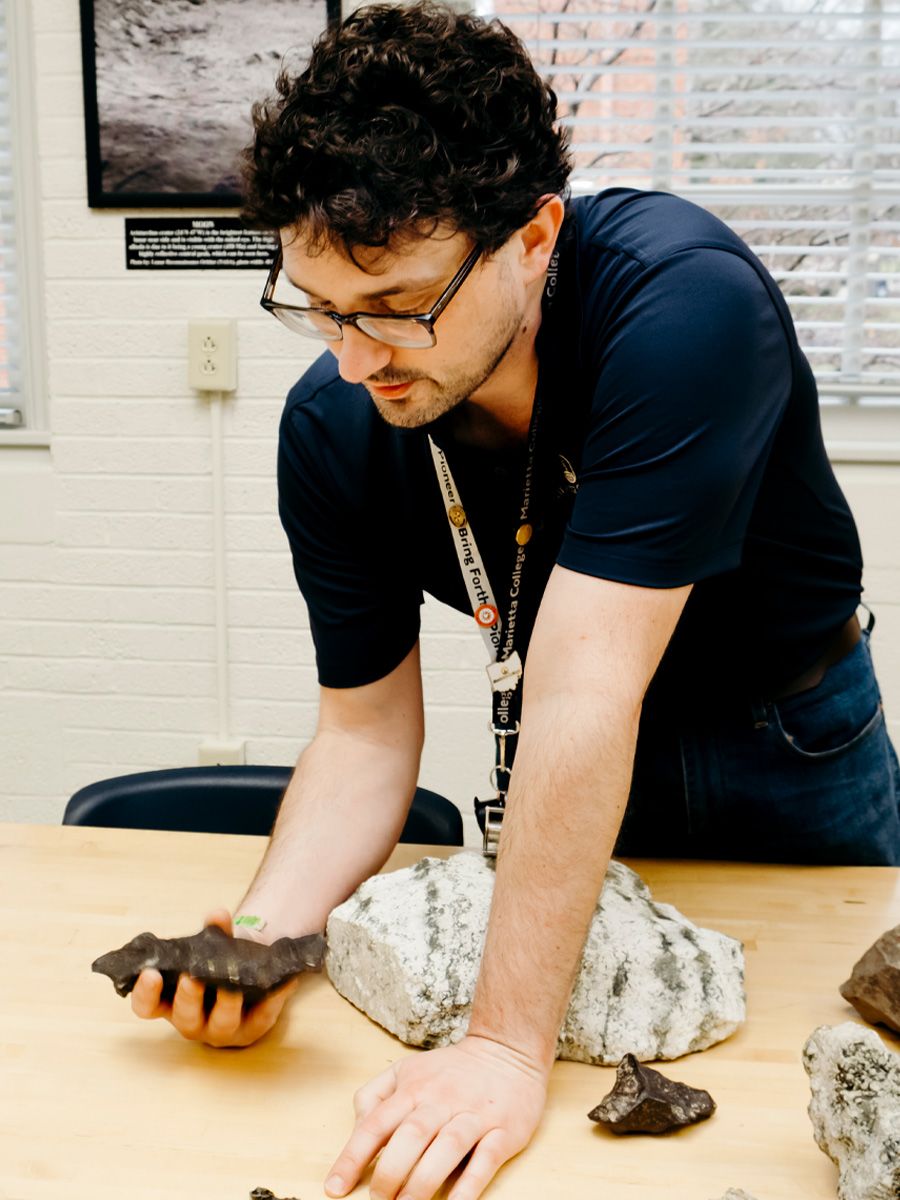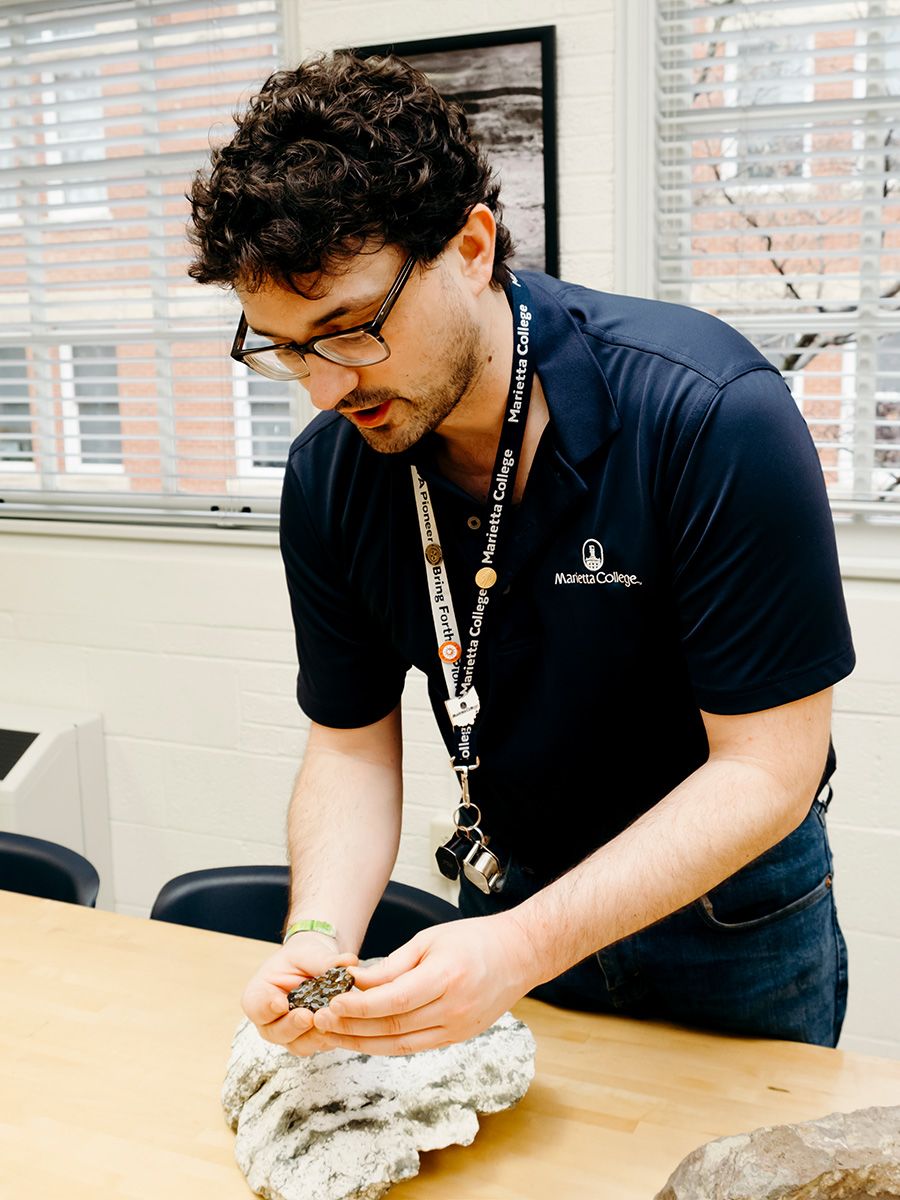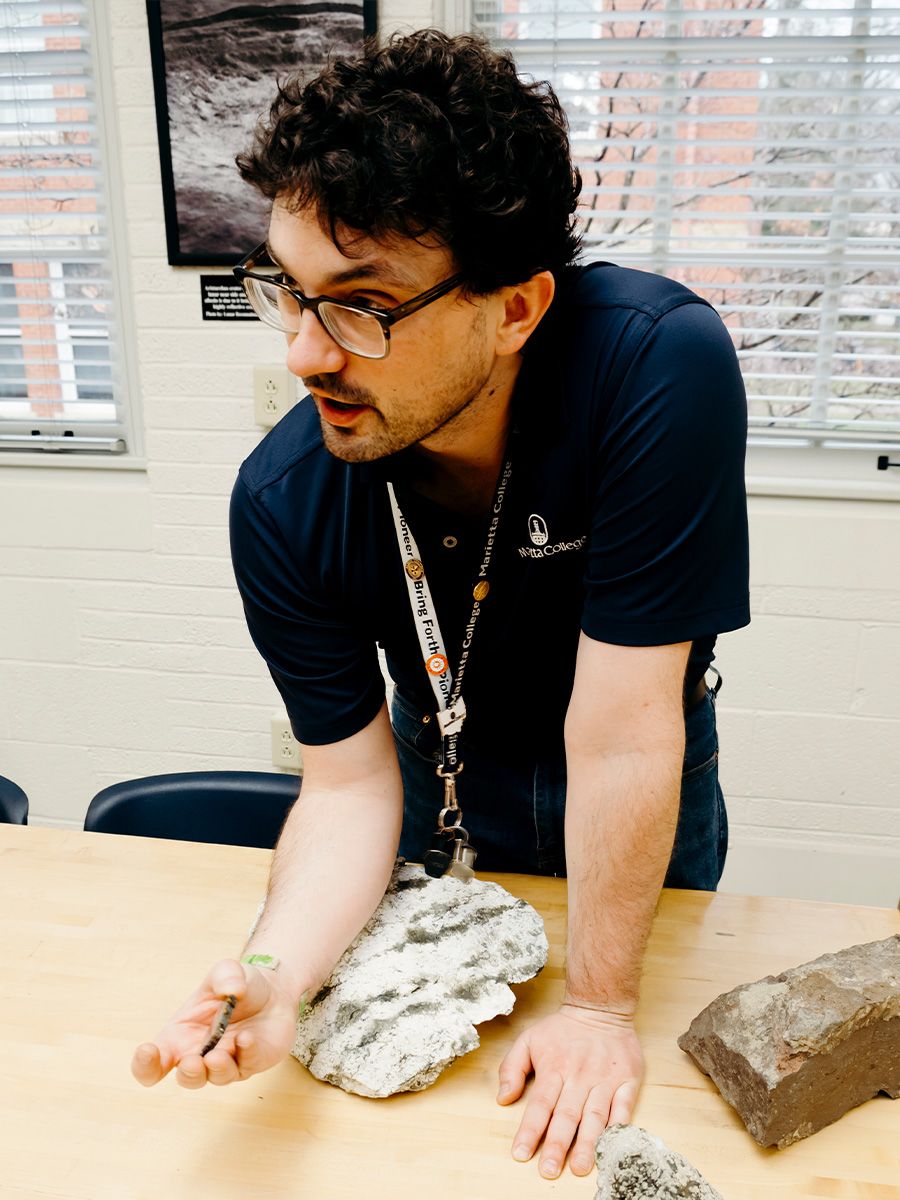I, Pioneer
Dr. Andrew Beck
Marietta, Ohio
Planetary Science

Dr. Andrew Beck is part of a team of scientists that will examine pieces of rock from the Mars system brought back to Earth by a future planetary exploration mission.
Beck, who is an Assistant Professor of Geology at Marietta, is working on two different science teams on the JAXA (Japan Aerospace eXploration Agency) mission called “MMX”, which stands for Martian Moons eXploration. Those teams are “MEGANE”, a gamma-ray and neutron detector, and the Sample Analysis Working Team (SAWT).
“JAXA has perfected sample return on planetary bodies, doing it twice on asteroids via the Hayabusa missions.”
In the upcoming MMX mission — which does not have a confirmed launch date — JAXA’s technology will allow the spacecraft to land on one of Mars’ two moons to pick up samples.
“The SAWT group is currently discussing how to best go about examining the samples when they are returned, and I look forward to the opportunity to take part of those analyses in the future. The samples are returned to the surface of the Earth via a parachuted capsule, then recovered by folks specializing in skills to assure the capsule isn’t contaminated by the Earth’s atmosphere on its return trip to the lab.”
Beck hopes to analyze the material with various instruments to try to determine the geology of that sample, which will come from the Martian moon Phobos.
“One hypothesis is Phobos is a blasted off piece of Mars that coalesced from material launched into orbit. That’s how our moon formed. This will likely be the first sample from the Mars system that are brought back to Earth by a spacecraft, so that’s pretty exciting!” (NASA is also in the hunt to return a sample, racing to do so from the Martian surface in the next decade)
The other science team Beck is working with, MEGANE, examines the flux of gamma rays and neutrons coming off the surface of Phobos, produced by interaction with galactic cosmic rays. MEGANE is being built by Johns Hopkins Applied Physics Lab, where Beck held an appointment prior to Marietta.
“It will basically tell you the abundance of different elements on the surface, down to a few meters depth — so if you go on the Periodic Table, it will tell you that there is this much hydrogen, this much of iron, and that much silicon. Then as geologists we can then say, ‘OK if you have that combination of elements, that means you have this set of minerals, which means it is this kind of rock’, which informs the geologic processes that formed the surface. ”
The spacecraft will include other instruments from other teams, and will launch in the mid-2020s. Travel time to Mars varies based on planetary alignment during launch, with an average travel time of about five and a half months. After arriving at the Martian moons, MMX will remain in the Mars system for several years, planning to return in the early 2030s.
Beck, who designed the Planetary Science major at Marietta, said he hopes to incorporate students in the analysis of samples from Phobos, and that they have already participated in preliminary data preparation for MEGANE.
“Last summer, student Emily Etheridge did MEGANE research with me that we hope will be beneficial in using elemental data to discern different igneous Martian rock types on the surface of Phobos, if they are present.”

Dr. Andrew Beck
Dr. Andrew Beck


